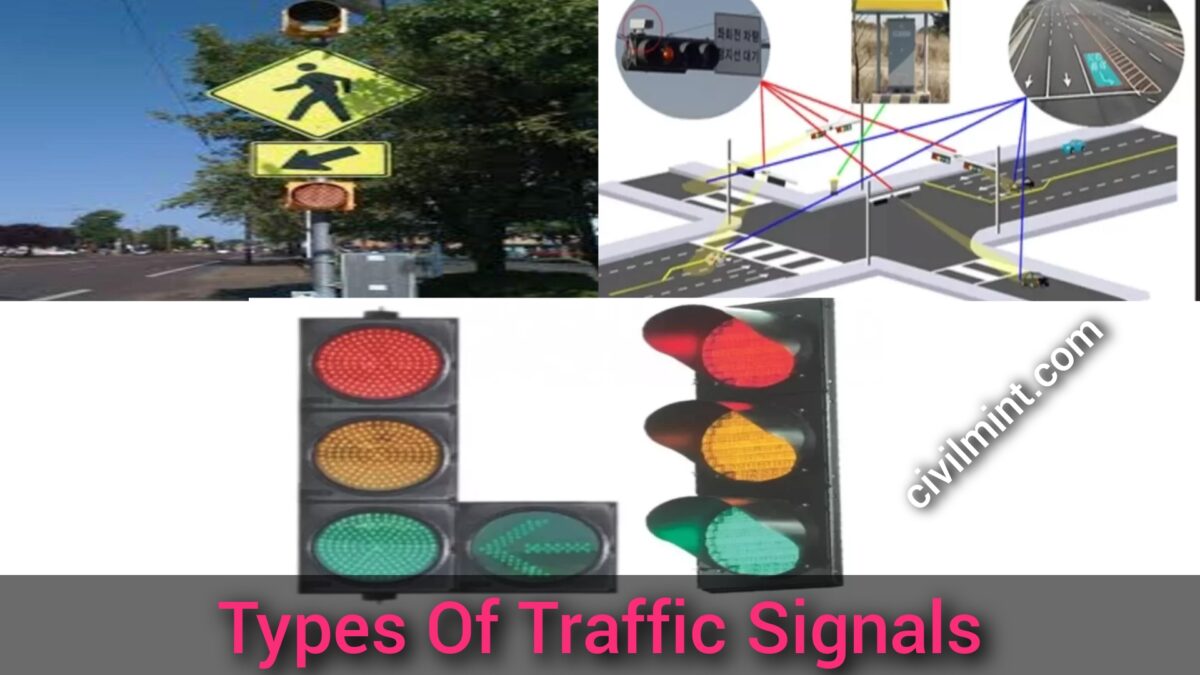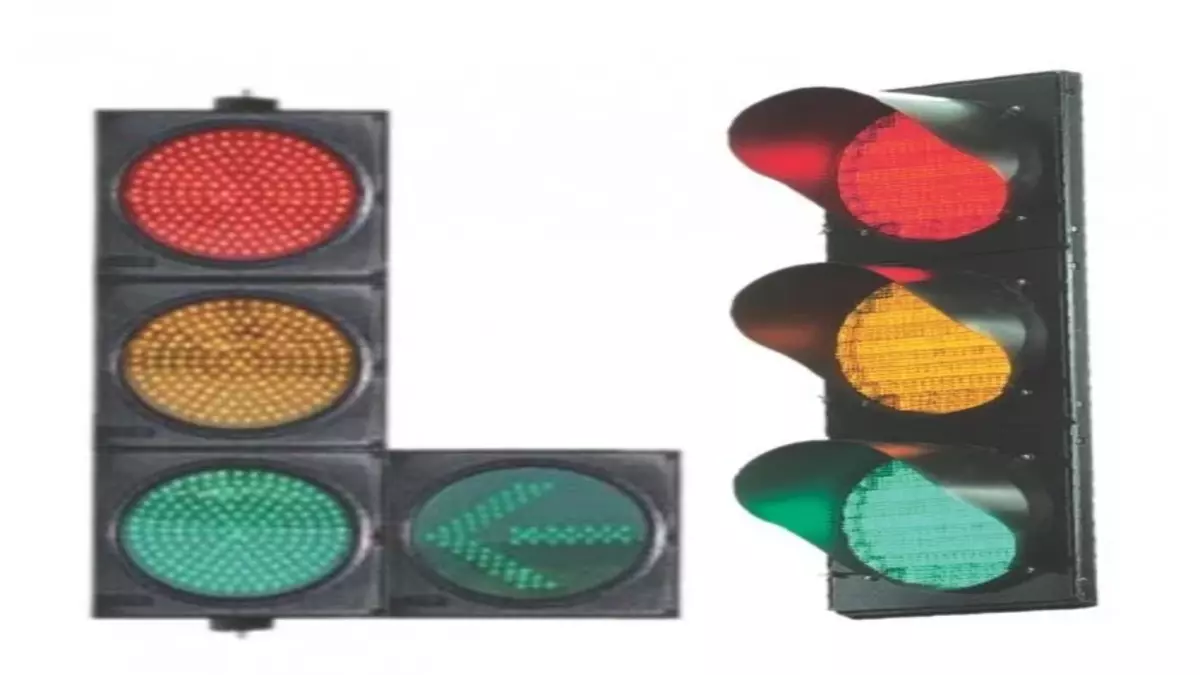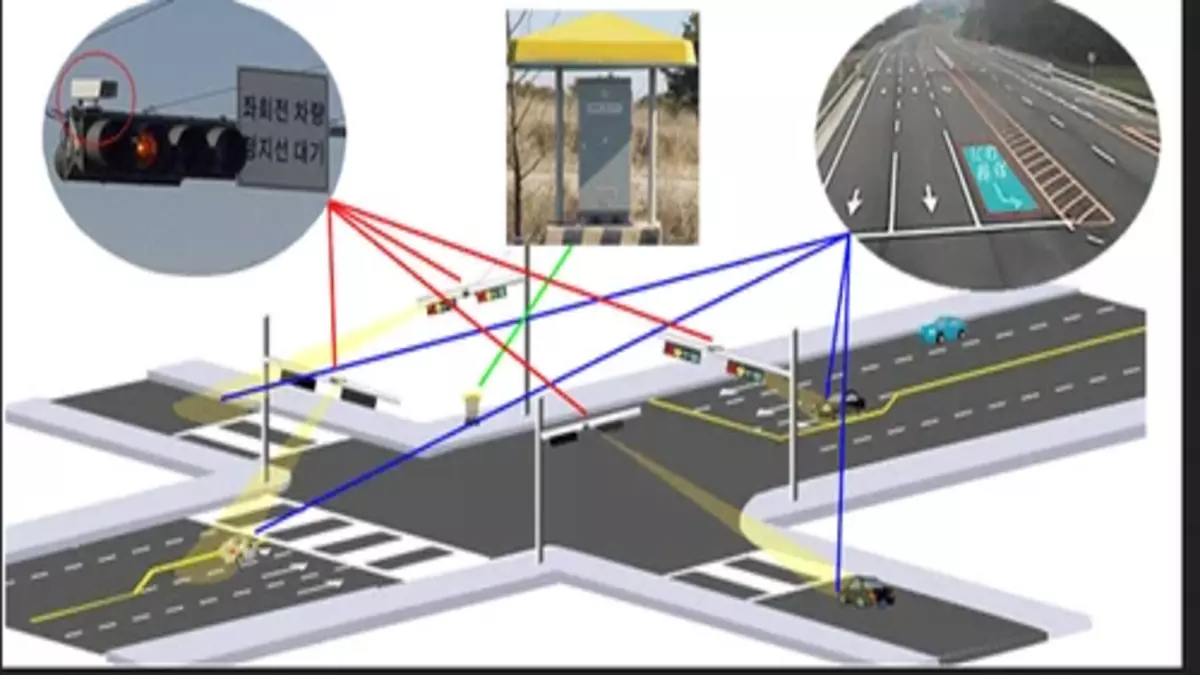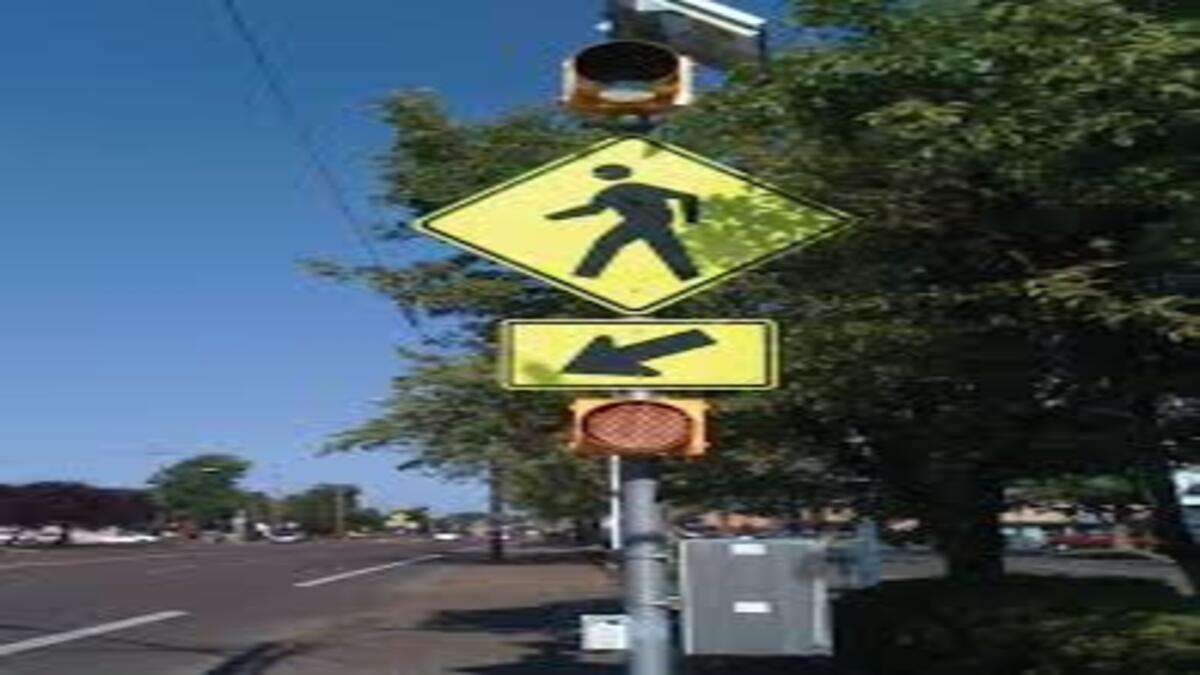Traffic signals are used to control traffic and prevent accidents.Traffic signals played an important role to reduce traffic congestion.
Basically, there are 3 types of traffic signals in road transportation engineering.

Here is the classifications of traffic signals.
- Fixed-Time Traffic Signals
- Vehicle-Actuated Traffic Signals
- Pedestrian-Actuated Traffic Signals
We will discuss in detail about these 3 types of traffic signals.
Table of Contents
1. Fixed-Time Traffic Signals
Fixed-time traffic signals are the most common type of traffic signals that operate on a fixed cycle, regardless of the actual traffic flow.

They operate according to a predetermined schedule that alternates between green, yellow, and red lights at specific intervals.
Advantages Of Fixed-Time Traffic Signals
- The primary advantage of fixed-time traffic signals is their simplicity and ease of use.
- They are easy to program and require minimal maintenance, making them a cost-effective solution for regulating traffic flow.
Disadvantages Of Fixed-Time Traffic Signals
- One of the significant drawbacks is that they do not take into account the actual traffic flow, resulting in delays and congestion during peak traffic hours.
- This can be frustrating for drivers and pedestrians, as they have to wait for longer periods of time at red lights. Fixed-time traffic signals do not prioritize pedestrians or emergency vehicles, which can pose safety risks.
2. Vehicle-Actuated Traffic Signals
Vehicle-actuated traffic signals use sensors to detect the presence of vehicles waiting at an intersection. They adjust the timing of the lights based on the actual traffic flow, allowing for a more efficient use of time and minimizing delays for drivers.

Advantages Of Vehicle-Actuated Traffic Signals
- One of the significant advantages of vehicle-actuated traffic signals is that they reduce unnecessary delays and wait times.
- They also prioritize emergency vehicles and public transportation, making them a safer and more efficient solution for regulating traffic flow.
Disadvantages Of Vehicle-Actuated Traffic Signals
- Vehicle-actuated traffic signals have some drawbacks.
- They require more maintenance and are more complex to program and operate than fixed-time traffic signals.
- They may not be effective during periods of low traffic flow, as the sensors may not detect the presence of vehicles waiting at the intersection.
3. Pedestrian-Actuated Traffic Signals
Pedestrian-actuated traffic signals are designed to give priority to pedestrians and ensure their safe passage across the road. They typically operate on a fixed-time cycle but can be activated by pedestrians through buttons located on the signal poles. They will extend the green light for pedestrians, allowing them to cross the road safely.

Advantages Of Pedestrian-Actuated Traffic Signals
The primary advantage of pedestrian-actuated traffic signals is that they prioritize pedestrian safety and reduce the risk of accidents.
Disadvantages Of Pedestrian-Actuated Traffic Signals
- They can cause delays for drivers, particularly during periods of low pedestrian traffic.
- Additionally, they require regular maintenance, as the buttons can become damaged or vandalized over time.
- They may also be ineffective in areas with high pedestrian traffic, as the extended green light may not provide enough time for all pedestrians to cross the road safely.
Conclusion
Each type of traffic signal has its own set of advantages and disadvantages. Fixed-time traffic signals are simple and cost-effective but may cause delays and congestion during peak traffic hours.
Vehicle-actuated traffic signals are efficient and prioritize emergency vehicles, but require more maintenance and may not be effective during periods of low traffic flow. Pedestrian-actuated traffic signals prioritize pedestrian safety but may cause delays for drivers and require regular maintenance. Ultimately, the most effective traffic signal system is one that takes into account the specific traffic conditions and needs of the area it serves.
FAQ
Fixed-Time Traffic Signals, Vehicle-Actuated Traffic Signals and Pedestrian-Actuated Traffic Signals.
